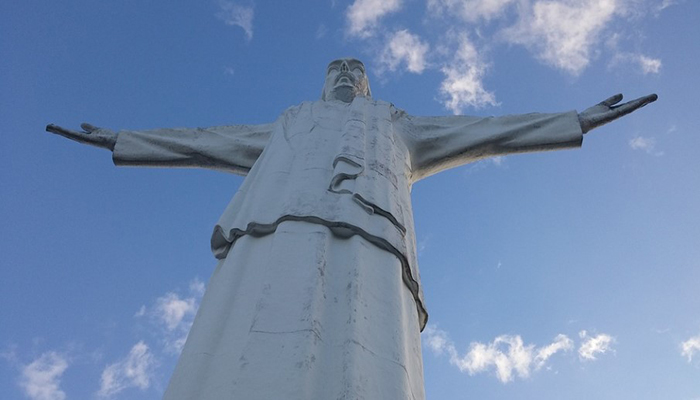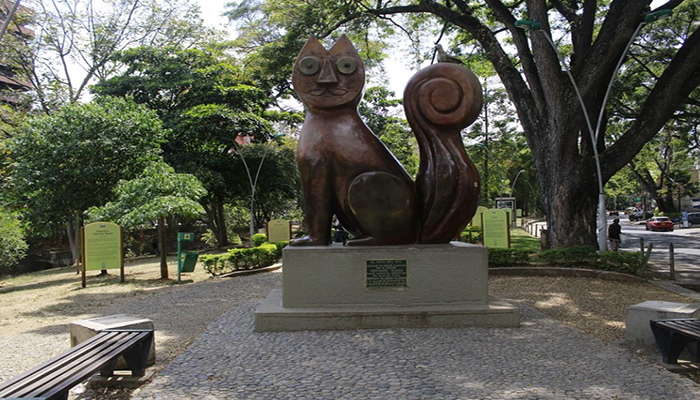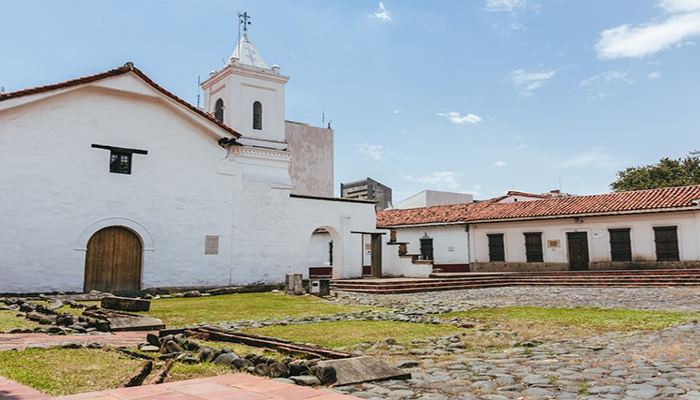Cali, Colombia is the capital of salsa for many reasons. Besides having more than 90 dance schools, it’s a style that is part of the culture of all the locals. It has become part of their identity. Salsa can be heard in every nightclub, especially those playing live music.
Salsa is now even part of Cali’s economy. Moreover, many hotels in Cali, Colombia have live music that can be enjoyed in their bars and restaurants. When visiting you may take classes or learn with the locals. Dancing or enjoying a salsa performance whether in a nightclub, or a live show in a theater, or on the street, are definitely the main activities to do in Cali, but there are several top spots that you should not miss while visiting this Colombian City.
Table of Contents
Cristo Rey
At the top of the Cerro de los Cristales (Hill of Crystals), stands the Cristo Rey (Christ the King). This 26-meter statue of Christ was completed in 1953, designed by Alideo Tazzioli Fontanini. It was commissioned to commemorate the end of the Thousand Days’ War that took place in the region.

The climb up the Cerro de los Cristales (named for the immense amount of quartz that can be found in the surrounding area) is very interesting because of the art found in the walls of the ravine. The artist Carlos Andres Gomez carved reliefs of human forms representing different scenes. There are four main works, representing the homage to life; protest against the damage to nature; the Garden of Eden; and an honoring to the Easter pilgrims.
Parks and gardens of Cali
Cali is bursting with urban and natural parks. Starting with the Parque de las Banderas (Park of the Flags), built in 1972 to host the sixth Pan American games, this park is an important landmark in the city. All the time there are events, and the Olympic stadium is located next to it.
There is no park more moving than the Parque del Perro (Park of the Dog). In this park stands the statue of Teddy, a dog that roamed the streets of the neighborhood until he died of poisoning, so the neighbors erected this sculpture in the seventies.

Every park in Cali has something different to offer. The Parque del Ingenio is full of food carts with typical desserts, the Park of the Peñon is always full of artists, and the Parque del Gato (Park of the Cat), although it’s very small, also commemorates man’s feline friends.
San Antonio neighborhood
The San Antonio neighborhood is the best representative of colonial architecture in Cali. The facades are mostly white, although some colored ones are always attracting attention. The wooden balconies and iron ornaments on the windows are present as in classic buildings of the seventeenth century.
The temptation to have breakfast, lunch, and dinner in this neighborhood is in the great variety of restaurants. You can walk around this area to see what you crave most, or maybe visit El Palomar, a space dedicated to the art of ceramics.

On the other hand, around the San Antonio Park are the best hotels in Cali, Colombia. One of the main meeting points in the park is a chapel, and there are always different activities on weekends. Maybe a storyteller, or artists and live music. To end the day in San Antonio you can go to any of the bars in the neighborhood to enjoy some salsa dancing.
Iglesia de La Ermita
A little to the east of San Antonio is the Simon Bolivar Park and the banks of the Cali River. It’s highly recommended to walk on the riverbank along the park to see the sculptures and art on it. However, the star of this area is the Ermita Church, a Catholic church with a neo-Gothic style that stands out among the modern buildings in the area.

Initially it was a very simple construction, until an earthquake in 1925 destroyed it. It was rebuilt as a miniature neo-Gothic church in 1942 dedicated to Our Lady of Sorrows. The interior stained-glass windows depict the twelve apostles.
Parque Nacional Natural Farallones de Cali
To the west of the city of Cali is the national natural park Farallones de Cali. More than 15 thousand hectares make up this park full of mountains, rivers, forests, and one of the greatest diversities of fauna in Colombia. Thanks to the heights of more than 4,000 meters (13,123 feet), you can observe various types of weather, especially beautiful views of fog along the lower mountains.

Many of the rivers that feed the Cauca River or flow into the Pacific Ocean are born here. Some of them are the Verde, Anchicaya, Pance, Melendes and Pichindi rivers, among many others. Ecotourism activities include hiking of various difficulties, swimming in the rivers, flora and fauna observation, including bird watching.
Follow – https://travelmansoon.com for More Updates